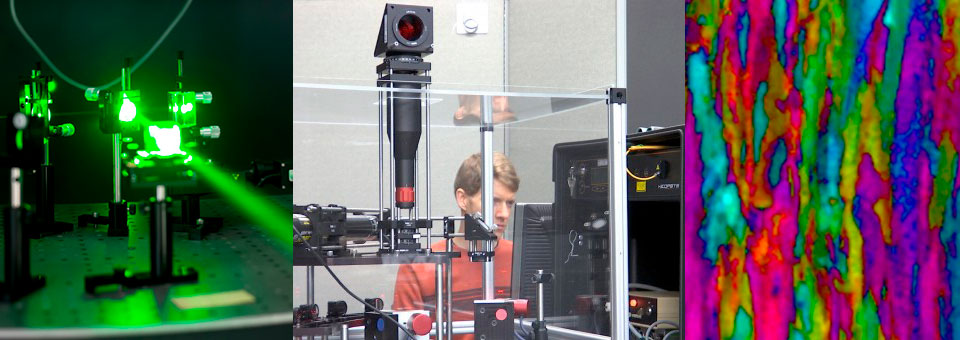 Microscopic examination of metals can help airplane manufacturers know that the planes they build can withstand the forces involved in flight and could assure airlines that jet engine maintenance would detect problems before takeoff.
Microscopic examination of metals can help airplane manufacturers know that the planes they build can withstand the forces involved in flight and could assure airlines that jet engine maintenance would detect problems before takeoff.
A small woman-owned business based in Albuquerque is commercializing a laser optical technology that has the potential to revolutionize this “failure analysis” procedure — not just for airplane parts but also for prosthetics, wind turbine blades and any product or component made of non-cubic metals such as titanium, magnesium, and zirconium. The technology is also effective on fiber composites and plastics.
Advanced Optical Technologies’ CrystalView crystallographic polarization-classification imaging (CPCI) technology can characterize the strength of metals in a fraction of the time that’s currently required—and can do it in a nondestructive way, without cutting small samples and inserting them in a stationary scanning electron microscope.
Streamlined quality control
Polarized Light Microscopes for characterizing metal were first invented in Germany in 1840, according to AOT Chief Executive Officer Malini Hoover. But conventional PLM could not characterize crystal orientation, which is critical to many mechanical properties. Electron Backscatter Diffraction, invented in 1928, became the industry standard for metallography but it is limited to relatively small samples and slow image acquisition.
AOT’s innovative and portable CrystalView CPCI instrument allows a large surface of an intact metal or plastic sheet or part to be imaged as it is being produced — or during routine maintenance of a part — rather than evaluating a sample or batch of samples after they’re made or in use. AOT’s crystallographic orientation imaging can be done at much greater speeds producing large images that deliver more statistics. The result is streamlined quality control that accelerates forged and additive manufacturing parts and processes.
AOT, which formed in 2004, developed its technology at the Air Force Research Lab in Albuquerque. Six years ago, it moved to the Sandia Science & Technology Park to test whether its process could benefit nonmilitary clients.
Local assistance entering a global market
Scott Bryant, an innovation director at New Mexico Manufacturing Extension Partnership, typically works with companies on manufacturing challenges. Because of his background in micro-nano characterization and technology commercialization, he partnered with AOT several years ago to help the company with growth strategy, ISO documentation, cyber security, and other issues that have prepared the company to begin manufacturing. More recently, Bryant helped AOT work with the marketing team it hired to create the company’s website and a video it can use to pitch its technology to potential customers.
Technology startups feel immense pressure to start making money, Bryant said, but “entrepreneurship takes time. It’s not a straight line from A to B. New Mexico MEP provides the institutional patience that fosters entrepreneurs and their technologies simultaneously.”
“For me it’s been an affirming experience to see the development of technology that is so absolutely cutting-edge and world class and to make the entrepreneurial walk with them from lab to market,” he said. “They’re ready. They have a new place, new staff, cybersecurity, world-class technology, a marketing foundation, and hardcore determined entrepreneurship at the helm.”
CEO Malini Hoover said, “Scott is a super-evangelist. The video really showcases what we do and gives us a presence. It’s our virtual storefront. And he has helped and guided us and got us grants. He’s our No. 1 champion.”
“Small companies need organizations like MEP” to compete with the multinational conglomerates that dominate the metal characterization industry, Hoover said. “There are a lot of things you need in place before you really can go to sales. It’s (Bryant’s) knowledge of what to be thinking of next that has helped us get where we are today.”

